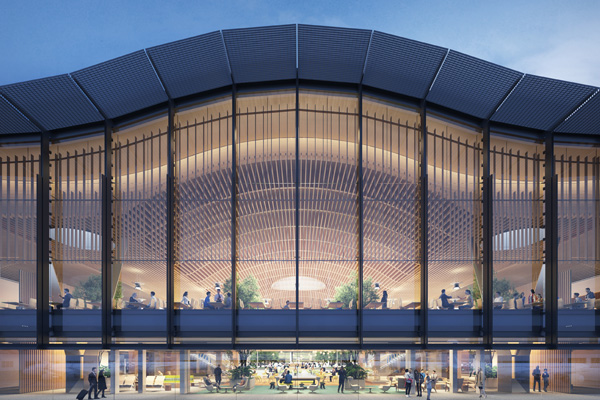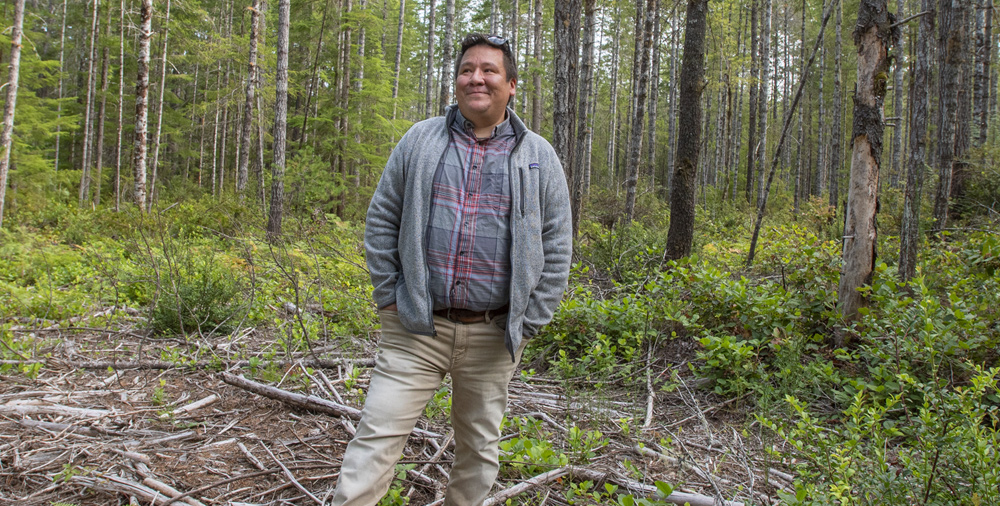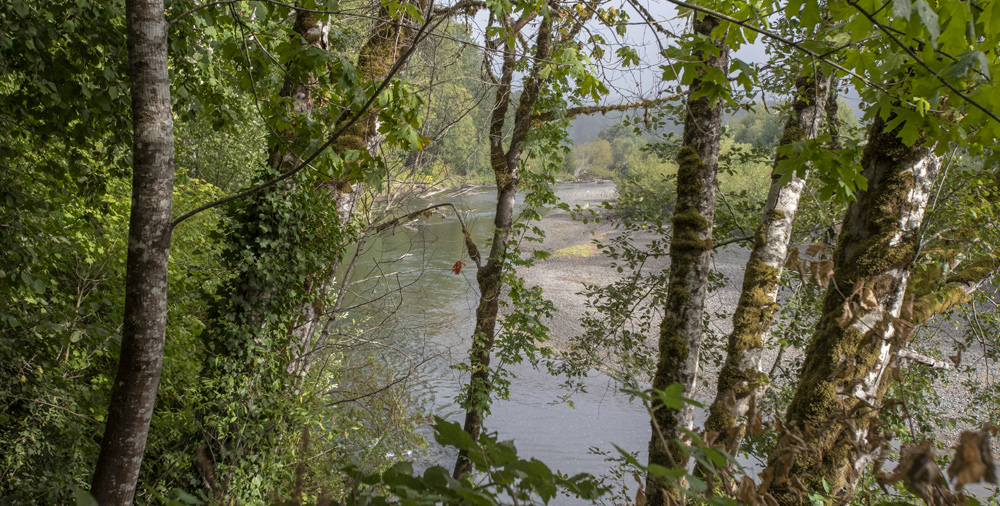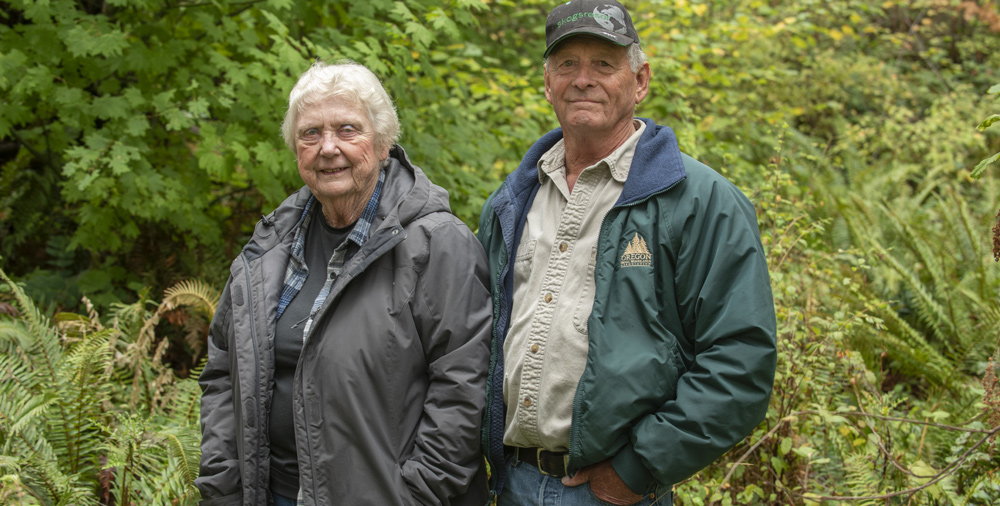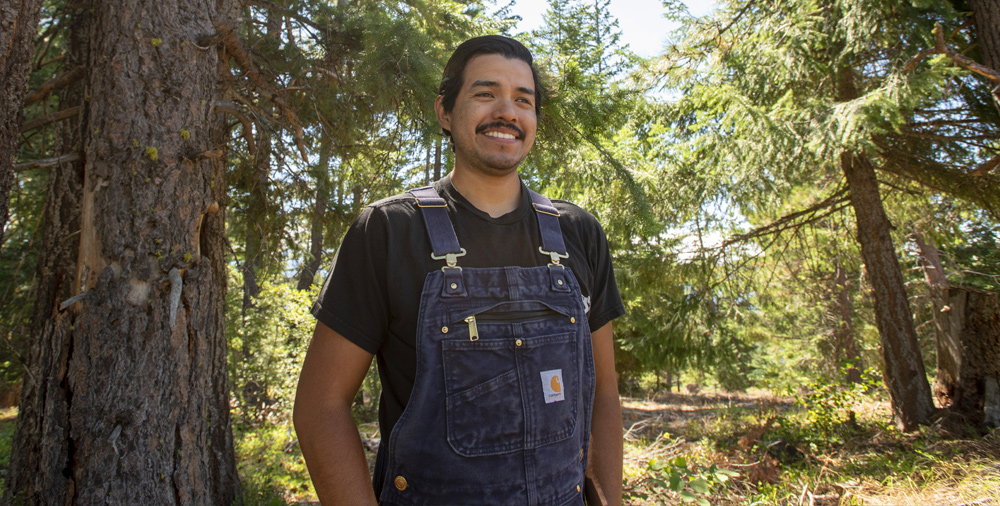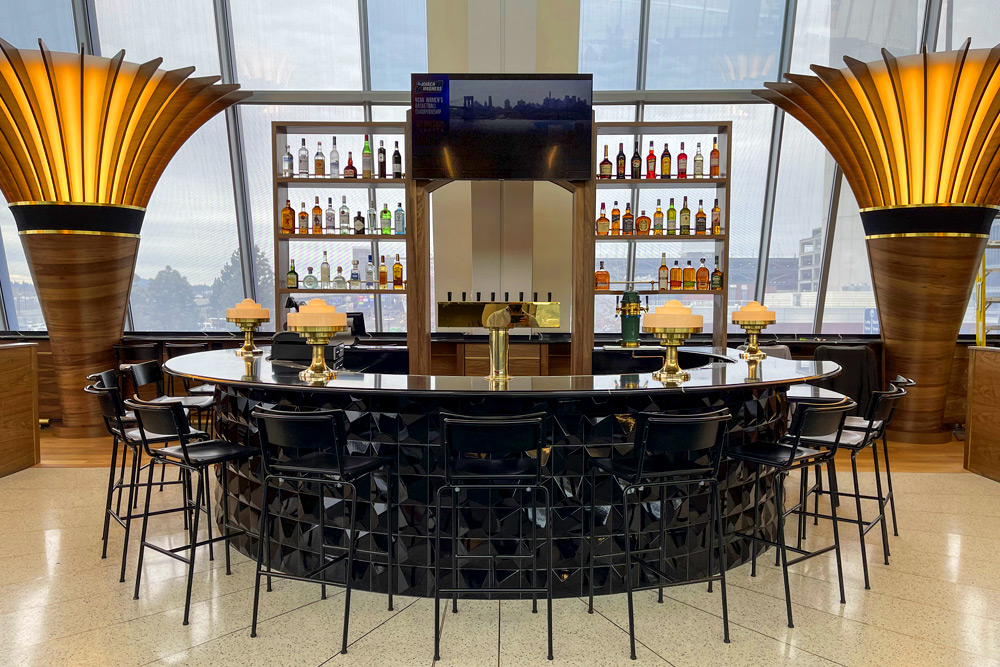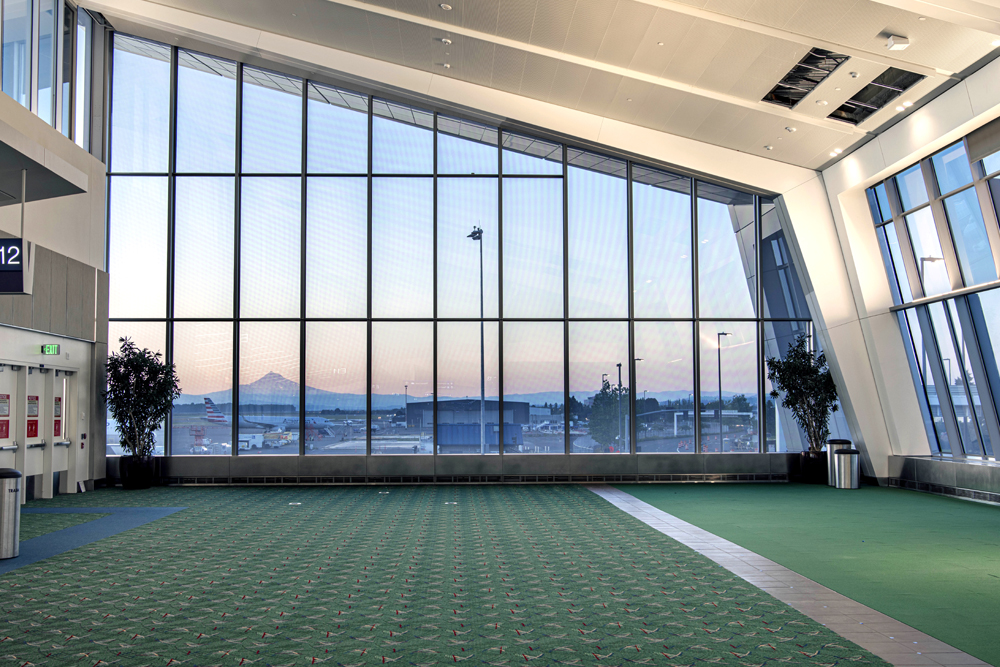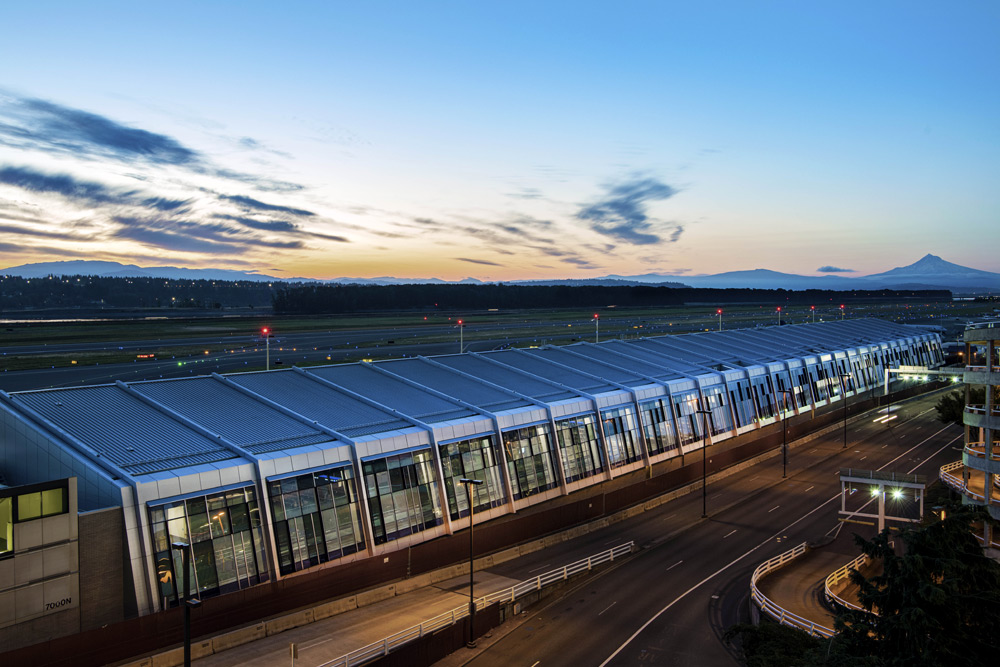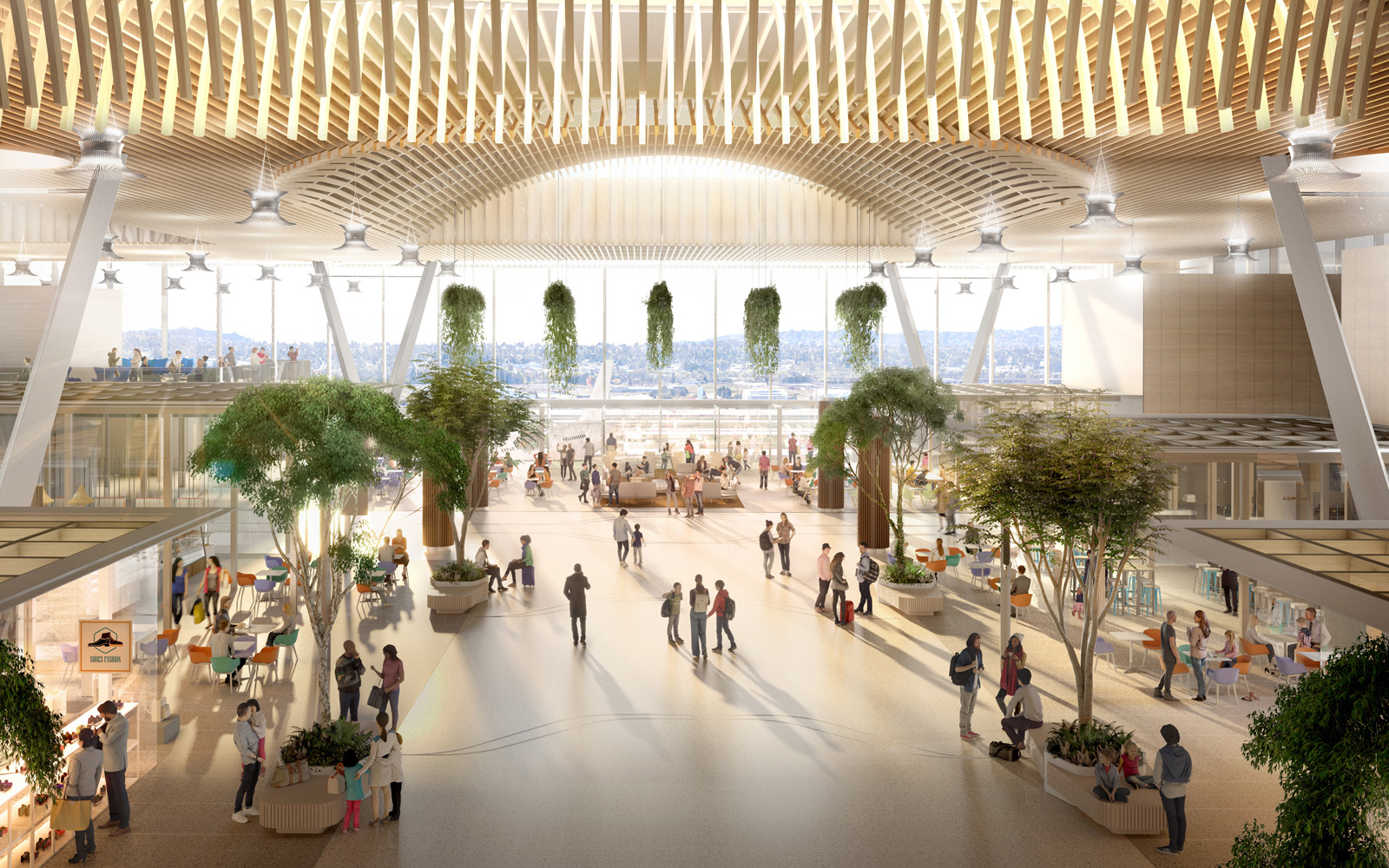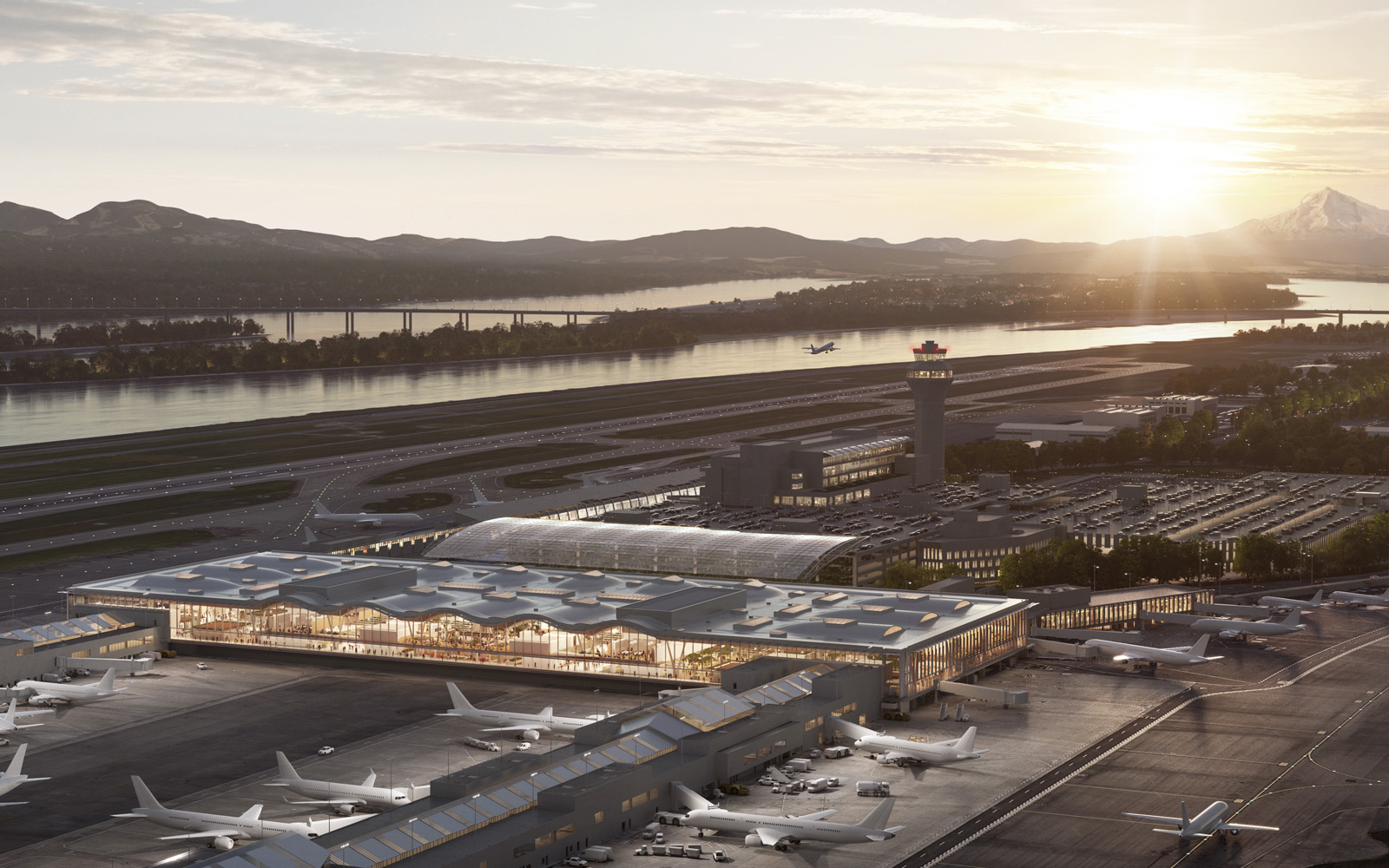
The art in PDX’s new terminal may sneak up on you.
Maybe you’re waiting in line at the security checkpoint, after a morning of furious packing, when you look up at the video wall. Suddenly you’re drifting up the slopes of a mountain. Or you’ve sat down to wait for your parents’ flight to arrive when your attention is captured by a glass wall covered in colorful characters.
You’re having an unexpected art break.
Wendy Given, who manages the airport’s art program, commissioned seven new art moments in the main terminal, with more to come in 2026. The goal of filling PDX with great art, she says? Sparking delight. Telling new stories about the Pacific Northwest. Inspiring you to take a breath and relax.
Wendy worked with the Regional Arts and Culture Council, Half Sister Studio, and a selection committee to find the right artists. Some, like Yoonhee Choi and Brad Johnson, are based right here. Others, like Rebeca Méndez and Sanford Biggers, created works to celebrate our region.
Sanford, who is based in New York but exhibits around the world, says he’s a frequent traveler who knows what it’s like to rush through an airport. He hopes his hanging sculptures will say something new to you each time you spot them. “I want people to feel a sense of exploration and surprise, even meditation, as they get lost in the patterns and the structure of the piece,” he says.
7 conversation starters for your next art break
Artworks like to tell us something, whether we’re stopping to study them or zooming past. If one of PDX’s new artworks grabs your attention, but you’re not quite sure what it’s trying to say, here are a few thoughts to get the conversation started:

Yoonhee Choi’s Between
Where to find it: glass walls alongside the north and south security queues
-
Yoonhee, a Portland architect and artist, designed thousands of colorful figures on two 56-foot glass walls. This is the first time she has worked in glass!
-
Her colorful lines and shapes were inspired by our experience of traveling – like the flight paths on our airplane seat screens and the blue and green speech bubbles we stare at as we text on our phones.

Sanford Biggers’ Odyssey
Where to find it: Hanging above the north and south ends of the concourse connector
-
Sanford’s geometric sculptures, printed with quilt patterns, are part of his “Codex” series, which was originally inspired by people who once hid designs in quilts to help formerly enslaved people find the route to freedom.
-
If you’re a native Oregonian, your ancestors may have designed some of the patterns on the sculpture suspended near Concourses D and E: They’re from old quilts at the Oregon Historical Society.

Ivan McClellan’s 8 Seconds
Where to find it: Video walls above the north and south security checkpoints
-
Ivan, a local artist who founded Portland’s annual Eight Seconds Juneteenth Rodeo, travels around the country photographing Black cowboys. The short film he made for PDX is his very first.
-
The rocky landscape where he filmed three (actual) cowboys riding their horses? It’s Owyhee Canyon, near Oregon’s eastern border.

Brad Johnson’s Terra Cascadia
Where to find it: Video walls above the north and south security checkpoints
-
Based in Trout Lake, Washington, Brad Johnson is an interactive artist who created an 11-minute piece that sends viewers floating up the slopes of Mount Adams, down the lava tubes at Gifford-Pinchot, and through 10 other Northwest landscapes.
-
All these images are animated 3D “point clouds” that Brad created by scanning 10,000 drone, aerial, and iPhone photos. His goal: showing you unfamiliar sides of local landmarks you think you know well.
Rebeca Méndez’s Walking the Earth: Oregon
Where to find it: Video walls above the north and south security checkpoints
-
Rebeca Méndez, a UCLA professor who makes art focused on environmental issues, created this piece for PDX’s video walls. You’ll see completely different versions on the north and south screens.
-
Rebeca stitched together video footage of nine hikes she took through awe-inspiring Oregon landscapes. She wants you to feel like you’re hiking through the entire state at the same time, even as the day speeds from dawn through dusk.

ShadowMachine’s stop-motion puppets
Where to find it: Temporary exhibit in the display cases on the north end of the concourse corridor
-
Portland’s own stop-animation studio loaned PDX puppets and props they used to make Guillermo Del Toro’s Pinocchio, The Tiny Chef Show, and other films.
-
When installing this kid-friendly exhibit, the puppeteers did all the work themselves!
Mezzanine Gallery’s Yoonhee Choi exhibition
Where to find it: Temporary exhibit in the pre-security gallery on the mezzanine level
-
Want to learn more about Yoonhee after being delighted by her glass walls? PDX’s new gallery, which opened in early December, is hosting an exhibition showing more of the artist’s work.
-
Each of the artists who have created major works for the main terminal will get a six-month gallery show. Next up in May 2025: Sanford Biggers.
Even more art is coming in 2026
You’ll have even more chances to have art moments once the second phase of the main terminal opens in early 2026.
Wendy and her team have already commissioned Dyani White Hawk and Kate Newby to make ceramic and glass tile walls. There will be more temporary spaces to display street art and local museum collections. And Louis Bunce’s 1958 mural for PDX – which caused quite a ruckus when the abstract expressionist painting debuted – will return to the airport.
Want to take an art walk around PDX’s art on display? Click on the “Art” tab in the interactive map on FlyPDX.com. It’ll guide you to more than 20 artworks, many of which are located pre-security!






